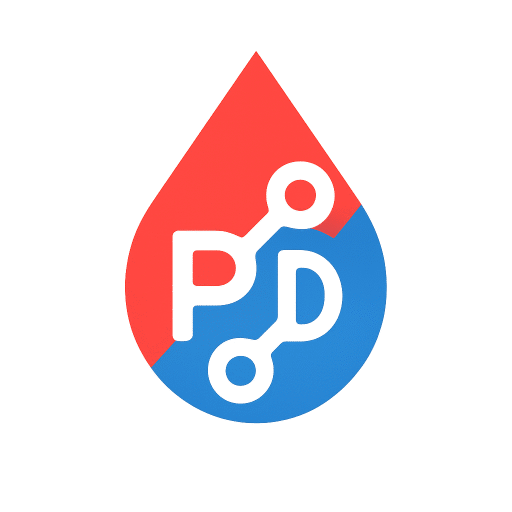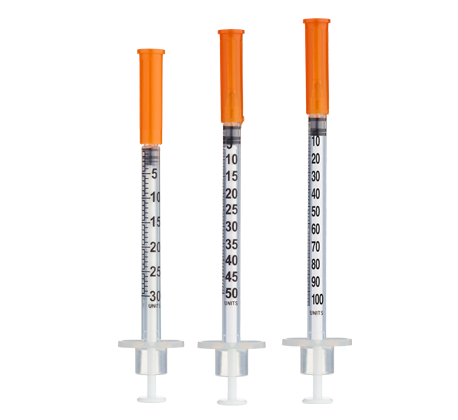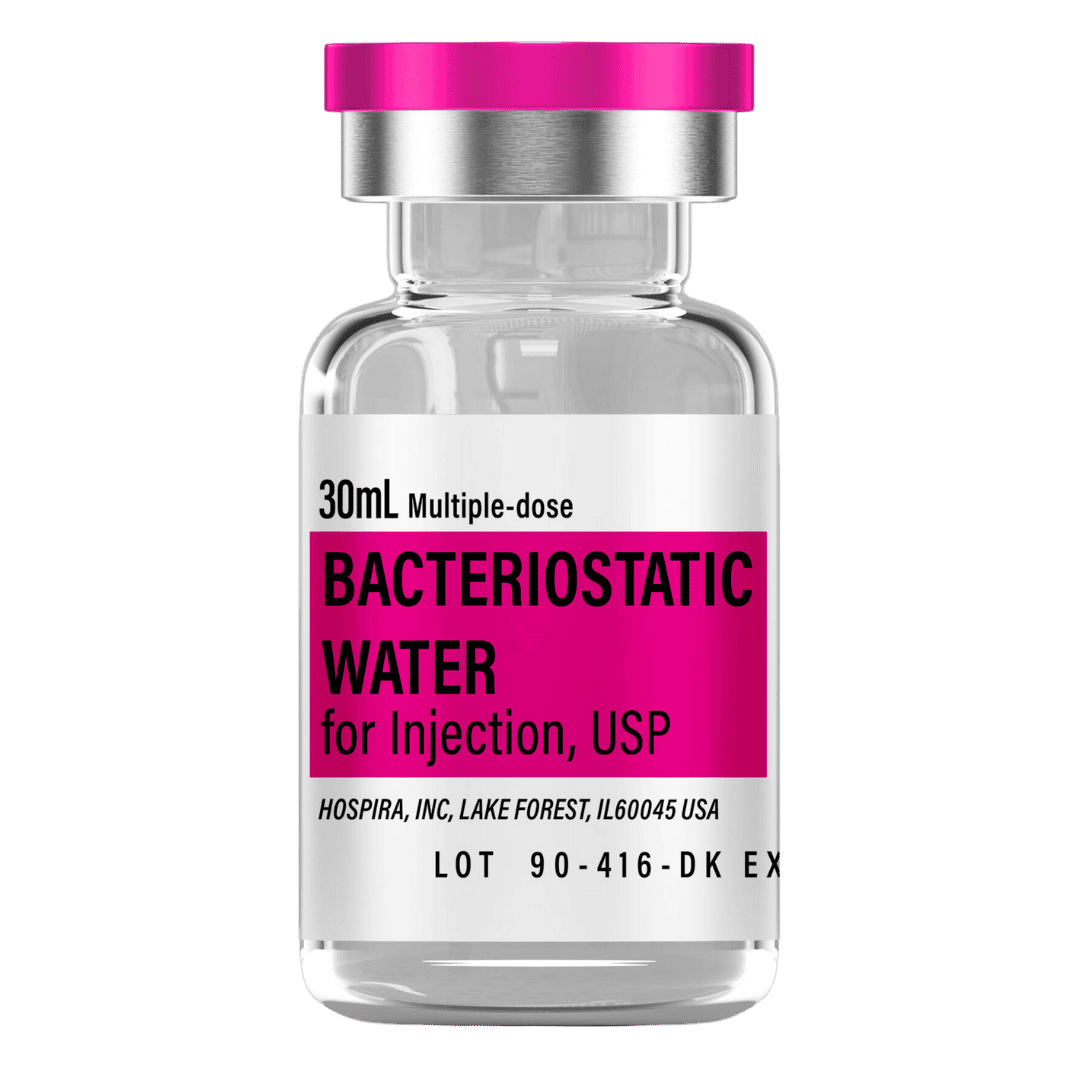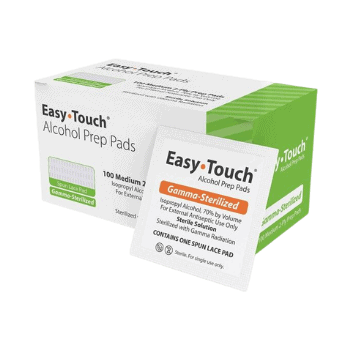Quickstart Highlights
GHK‑Cu is a naturally occurring copper‑binding tripeptide (Gly‑His‑Lys) studied for skin remodeling, wound repair, and anti‑inflammatory/antioxidant activity in preclinical and human topical studies.[1][2] This educational protocol models a practical dilution and once‑daily topical / microneedle‑assisted application schedule, reflecting the predominant routes studied in the literature (systemic subcutaneous dosing is not established in peer‑reviewed human research).[1][4]
- Reconstitute: Add 3.0 mL sterile diluent → ~33.3 mg/mL concentration.
- Typical daily range (topical/application model): 1–5 mg once daily (gradual titration; parenteral human dosing is not established).[9]
- Easy measuring: At 33.3 mg/mL, on a U‑100 insulin syringe used as a measuring tool, 1 unit = 0.01 mL ≈ 333 mcg.
- Storage: Lyophilized at −20 °C; after reconstitution, refrigerate at 2–8 °C and avoid repeated freeze–thaw cycles.[11][12]
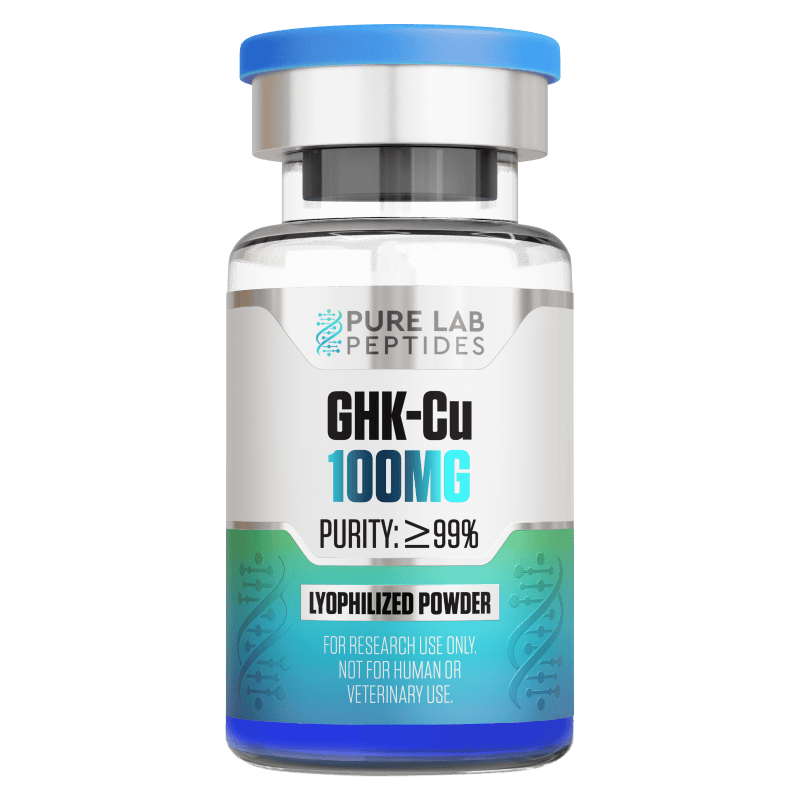
Dosing & Reconstitution Guide
Educational guide for reconstitution and daily application
Standard / Gradual Approach (3.0 mL = ~33.3 mg/mL)
Route & frequency: Topical or microneedle‑assisted transdermal, applied once daily, consistent with human cosmetic/dermatologic literature; localized/intra‑articular injection is mainly preclinical, and systemic subcutaneous schedules are not established in peer‑reviewed human studies.[1][4][5]
| Week | Daily Dose (mg) | Units (per injection) (mL) |
|---|---|---|
| Weeks 1–2 | 1 mg | 3 units (0.03 mL) |
| Weeks 3–4 | 2 mg | 6 units (0.06 mL) |
| Weeks 5–6 | 3 mg | 9 units (0.09 mL) |
| Weeks 7–8 | 4 mg | 12 units (0.12 mL) |
| Weeks 9–12 | 5 mg | 15 units (0.15 mL) |
This schedule uses the largest practical dilution (3.0 mL) to keep volumes legible on common U‑100 insulin syringes used as measuring tools. Note: Parenteral (systemic) human dosing is not defined in peer‑reviewed literature; this table supports precise volumetric aliquoting for topical or microinjection workflows only.[1][9]
For ≤10‑unit (≤0.10 mL) administrations, consider 30‑ or 50‑unit insulin syringes for improved readability.
Reconstitution Steps
Supplies Needed
Plan based on an 8–16 week once‑daily protocol with gradual titration.
-
Peptide Vials (GHK‑Cu, 100 mg each):
- 8 weeks total (~140 mg): 2 vials
- 12 weeks total (~280 mg): 3 vials
- 16 weeks total (~420 mg): 5 vials
-
Insulin Syringes (U‑100):
- Per week: 7 (1×/day)
- 8 weeks: 56
- 12 weeks: 84
- 16 weeks: 112
-
Bacteriostatic Water (10 mL bottles): Use ~3.0 mL/vial
- 2 vials: 6 mL → 1 × 10 mL
- 3 vials: 9 mL → 1 × 10 mL
- 5 vials: 15 mL → 2 × 10 mL
-
Alcohol Swabs: One for vial stopper + one for application site per day
- Per week: 14
- 8 weeks: 112
- 12 weeks: 168
- 16 weeks: 224
Protocol Overview
- Goal: Support skin quality and tissue‑repair pathways noted in preclinical and human topical literature (collagen, ECM remodeling, antioxidant/anti‑inflammatory activity).[1][2]
- Schedule: Once‑daily topical/application cycles of 8–12 weeks; optional extension to 16 weeks is commonly used in cosmetic studies.[1][5]
- Reconstitution: 3.0 mL per 100 mg vial (~33.3 mg/mL) enables precise volumetric aliquots with U‑100 syringes.
- Route: Topical or microneedle‑assisted transdermal preferred in the literature; systemic subcutaneous dosing lacks peer‑reviewed human standards.[4][9]
Dosing Protocol
Caution: No standardized human parenteral dosing has been established for GHK‑Cu; gene‑expression reviews explicitly note that minimum effective dosages in humans have not been determined.[9] The table above provides a conservative, once‑daily application model to help with consistent aliquoting.
- Start: 1–2 mg daily; increase by ~1 mg every 1–2 weeks as needed.
- Target: 4–5 mg daily by Weeks 9–12.
- Timing: Any consistent time; for microneedle‑assisted delivery, follow device and asepsis guidance.[4]
Storage Instructions
Important Notes
- Use sterile technique for reconstitution and when using microneedle devices; dispose of sharps appropriately.[10]
- For microinjection or microneedle workflows, rotate application sites (e.g., facial zones, scalp areas) to minimize irritation.[4]
- Document daily amount and site to maintain consistency across the cycle.
How This Works
GHK‑Cu binds Cu2+ and modulates gene programs that promote extracellular‑matrix renewal, angiogenesis, and antioxidant defenses while attenuating inflammatory signaling.[1][2][6][7][9] Human topical studies report improvements in skin density, elasticity, and appearance over multi‑week use, consistent with its ECM‑centric actions.[1][5]
Potential Benefits & Side Effects
- Skin quality: Reports of increased dermal density/thickness and improved appearance after multi‑week topical use in randomized or controlled settings.[1][5]
- Wound/healing biology: Preclinical work shows anti‑inflammatory and antioxidant effects and ECM support (e.g., IL‑6 modulation; protection in inflammatory injury models).[6][7]
- Tolerability: Topical and microneedle‑assisted delivery are generally well tolerated in studies; irritation risk increases with device use—follow aseptic technique.[4][5]
Application & Technique
- Clean the vial stopper and application area; allow to dry fully.
- For microneedle‑assisted delivery, follow device guidance; studies show enhanced GHK‑Cu skin permeation with microneedling and favorable short‑term tolerability.[4]
- If using needle‑based microinjections, inject small aliquots slowly and rotate sites; general pharmacologic considerations for subcutaneous delivery are reviewed elsewhere.[10]
Recommended Source
We recommend Pure Lab Peptides for high‑purity GHK‑Cu (100 mg).
Why Pure Lab Peptides?
- High‑purity lots with batch documentation and quality controls.
- Consistent, ISO‑aligned handling and fulfillment.
- Reliable packaging to support cold‑chain integrity.
Product ID: 1057
Important Note
This content is intended for therapeutic educational purposes only and does not constitute medical advice, diagnosis, or treatment.
References
-
Regenerative & Protective Actions of the GHK‑Cu Peptide (Review)
— Overview of GHK‑Cu skin/repair actions; human topical studies summarized. -
The Potential of GHK as an Anti‑Aging Peptide (Review)
— Clinical/preclinical evidence for remodeling, wound healing, anti‑inflammatory effects. -
Human Skin Penetration of a Copper Tripeptide (In Vitro)
— Permeation characteristics and factors affecting GHK‑Cu skin delivery. -
Microneedle‑Mediated Delivery of GHK‑Cu
— Microneedles enhance GHK‑Cu skin permeation; tolerability noted. -
Topical Copper Tripeptide After CO2 Laser Resurfacing
— Human study informing cosmetic/dermatologic use and expectations. -
Effect of GGH, GHK, and Copper Complexes on IL‑6
— Fibroblast anti‑inflammatory signaling relevant to wound biology. -
GHK‑Cu Protects in LPS‑Induced Acute Lung Injury (Mouse)
— Anti‑inflammatory/antioxidant effects in vivo. -
Intra‑articular GHK‑Cu in Rat ACL Reconstruction
— Local injection model; dose context for preclinical joint repair. -
Effect of the Human Peptide GHK on Gene Expression (Review)
— Notes that minimum effective human dosages are unknown; gene‑program effects summarized. -
Subcutaneous Drug Injection: Review
— General pharmacologic/technique considerations for SC delivery (context for microinjection workflows). -
Sigma‑Aldrich: Peptide Handling & Storage
— Practical guidance on storage, aliquoting, and avoiding freeze–thaw. -
Thermo Fisher Scientific: Standard Peptide Storage
— Temperature, aliquoting, and stability considerations. -
Pure Lab Peptides — GHK‑Cu (100 mg) Product Page
— Product details and quality documentation.
